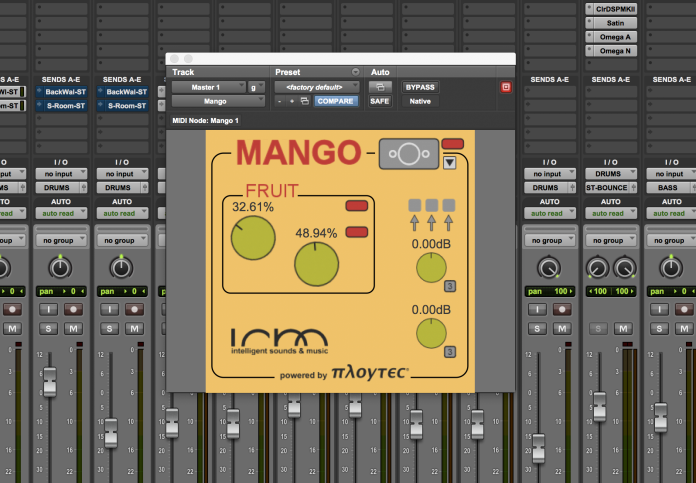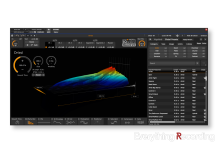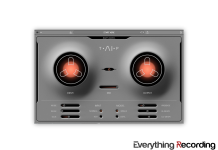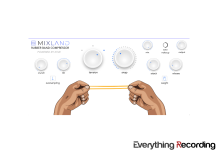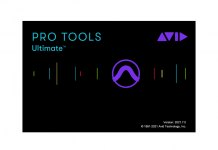Mid / Side Capability
Sounds Great
Here at Everything Recording HQ, we maintain a “whatever it takes to get the mix right” approach to audio and welcome any plugin that accomplishes this task. Mango is the self-described “sweetener” of plugins. I had actually not heard of Ploytec or Intelligent Sounds and Music until a press release showed up in my inbox. Immediately intrigued by the concept and interface, I grabbed a copy and did a little research on the company.
Mango is another joint venture from the company Intelligent Sounds and Music and Ploytec. The initial joint venture was Aroma, a plugin that has 4 different harmonic distortion models based on valve and tape hardware. Each of these 4 models can be controlled independently to blend different harmonics into the audio. After this plugin was developed, the creators continued to push the envelope to make a smaller brother to Aroma that contained an ideal transmission curve. Thus, Mango was born.
While Mango is based on various pieces of analog hardware, it is not based on one in particular. Instead, the best parts of tube and tape hardware has been incorporated to impart just the right amount saturation and warmth to digital mixes. The science behind it involves adding specific non-linear distortion curves to affect the incoming signal. The result is various odd and even order harmonics being combined to give the track all of the same facets of analog hardware. What Mango does accomplish is leaving all of the grunt work behind the scenes and giving the user minimal controls.
Upon opening Mango, you will see a pleasantly bright yellow interface, a nice departure from the serious looking dark colored, glossy plugins everyone is making nowadays. If using a demo version, Mango will definitely make you aware of this with a flinty, female voice proudly letting everyone know this is a “Mango demo version”. This can be pretty annoying when playing with a mix trying to determine if you want to buy the plugin, but a slight distraction nonetheless. After all, it’s just a demo.
While the bulk of the power comes from the “Fruit” control, other tools are present to allow Mango to process the audio to its best ability. Incorporating a hard clip limiter, the input and output section allow for trimming the signal to optimum levels. To make determining the proper level a cinch, the input knob will display a red ring around it to indicate the signal is above 0dB. Just next to the input and output volume controls sit the 3/18 buttons. With these button, either a +/- 3dB or 18dB range control can be used with each knob. Just be careful switching between the 3 or 18dB as each setting doesn’t retain its memory. What doesassist with this is the Compare / Remind buttons lined up just above the input. These 3 buttons allow for different presets to be saved to switch between. To make everything even easier, hovering over a control will display its function at the top of the interface.
While this plugin has one main function and is every bit a one knob plugin, Mango does something that most other plugins of the same type don’t: mid / side processing. By allowing the control of either the center of the sound field or the stereo left and right, further enhancement can be applied to tracks to add space to the instruments in the far corners or more presence to a vocal track in the center. When Mid / Side is enabled, two “Fruit” knobs appear, each with independent control of how much impact is wanted. Processing on either the mid or the side can be enabled with the red bypass buttons in the “Fruit” section.
Mango has one main control, and that control is basically “more”. While the plugin itself refers to this control as “Fruit”, the objective is simple – turn this control up, and the track sounds better. This is accomplished using different harmonic enhancers borrowing from analog tube, tape and the aforementioned hard clip limiting. All of the hard work has been taken care of by Ploytec, leaving you with the fun work of just determining how much impact is needed on tracks.
In operation I found Mango to do exactly what it advertises. When levels are dialed in optimally, a very smooth top end with a hint of low-mid is applied that helps even out harsh parts on a track. Combine this with mid/side functionality and Mango really opens up different sonic possibilities. Using the Mid “Fruit” control, I was able to have vocals step just the right amount of forward in the mix. Using the Side “Fruit” control, synths would jump out of the corners of the mix.
I tried Mango in just about any scenario and the results always improved the character of the track, BUT with plugins like these, it is very easy to use too much because of how great it sounds. I suggest turning the “Fruit” control up until you can just hear it, then back it off just a little. It is very easy to fall in love with this plugin and apply it everywhere in copious amounts, only to find that too much of a great thing can render the track a little too hyped in the top end. This can only attribute to how great the plugin sounds and is a pitfall of many plugins of this genre. Moderation is key… Except when it’s not…
Conversely, I found a use for Mango beyond just the sweet, subtle enhancement. On drum tracks, both acoustic and electronic, I would crank the input, attenuate the output equally and push dial in the “Fruit” control into clipping. The result was very unique. Transients would pretty much maintain their snappiness, but undertones would rip apart in glorious distortion. Kick drum low end would magically shoot out of the speakers and the top end would sizzle and distort. While this isn’t necessarily the goal of Mango and would not work on every track, it is a great byproduct that can add new dimension to a drum kit. I just wish I had a wet dry knob at the end of the signal chain, so I could tuck just the right amount of dirt into the track without using an aux bus.
I had absolutely no critiques of Mango. This plugin easily will find its way on countless tracks in a mix. The mid/side control is a welcome addition to a plugin of this type and the ease of use makes it one of those plugins that will be reached for in a pinch. Do not let fruit be a missing part of a balanced DAW diet. Every mix needs a little Mango.
For more information and to purchase, visit http://www.ploytec.com/mango/



